Cabinets- low to high, oh my
A recent thread stirred me to put this together, all info I've posted at times in the past. I'm a KD, done a lot of kitchens, worked with a lot of brands, have built a lot of things for many years, including cabinets. I'm fussy...and more than a little opinionated. This is long ...and I may not manage to reply since this may be my goof off time for a few day.
So what gives with cabinet quality, what do (should) you get as you spend more...
Most of what is used to "sell" you cabinets is nonsense. Why? Simply because that is what the public wants: short, simple take-aways, sound bites. Plywood, dovetails, soft close, full extension..yaydyaydyadyadya.
Cabinets are made with one of two construction methods (primarily) Framed and Frameless.
Framed cabinets have subsets that relate to the overlay- full, partial (or traditional), and inset.
Variation in frame construction.-pocket hole (good), doweled (better), mortise and tenon (best)
Pocket Hole
The vast majority of cabinets on the market and practically all those made by local "custom" builders use pocket hole construction to assemble face frames. Framed members are glued, held in place with some sort of clamping mechanism, a pocket hole is drilled in the rails (horizontal memebers) and a screw joins the rail to the stile.
Pros- fast hence cost effective, reasonably secure, rquires little skill, easy to establish manufacturing for, easy to do on a small scale (hence it's popularity with local makers).
Cons- glue joint does next to nothing since it is end grain to long grain. Eventually the screw loosens some. As wood expands and contracts the fibers are forced agains the metal. At some point in time the fibers break and can no longer expand and contract. This is called compression set, it is why the head fall off of hammers. In the case of cabinets this process can take over a decade, sometimes two. How long it takes is related to swings in humidity.
Doweled
I include any variations to dowels- biscuits, loose tenons etc though they are not all equal- In my experience dowels are better than either of the alternatives. The end of the rail is drilled to accept two dowels, the stile is drilled to match. Dowels are glued and inserted into the holes, frame is assembled and clamped (occasionally also pinned to hold it while the glue sets)
Pros- you now have a decent glue joint and no metal
Cons- requires better equipment (very difficult to do on a small scale with dowels, hence the alternate joinng methods), needs more precision (dowels must align exactly-tolerance in the thousandths), proper gluing is essential ( a glue starved joint will fail every time)
Mortise and Tenon
(This is pertianing to frames NOT doors- may makers will refer to doors as mortise and tenon when actually they are using cope and stile)
This is the traditional joint used in quality furniture. The end of the rail, say for an inch, is made thinner on all sides (a tongue if you will) making the tenon, a matching rectangular hole is made in the stile (mortise), assembled glued and clamped.
Pros- properly done lasts a few lifetimes (think anitques), minimizes moisture movement (doesn't eliminate it though) thus minimizing cracking at seams of the finish. Less prone to glue starvation than dowels, larger long grain to long grain glue joint (which with modern glues is near permanent)
Cons- either requires better equipment or more time and expertise. M&T can be done on a small scale so you may find it in higher end local makers, you should expect it from hi-end mfgs.
Then there are the boxes- how are braced (kept square), how are they joined to the frame, what are the backs, how captured , what is the hanging rail and how is it attached, what are the sides made of.
Braces-these are what keep the cabinet square in plan- in order of quality- plastic corners stapled, plastic corners screwed, wooden corners glued and pineed, front to back struts on each side set into dado joints, full sub-tops. (Insets should always have full sub-tops IMO)
Note on tops and bottoms: as you move up in quality and start to see full sub tops you should be seeing both the top and the bottom of the cabinet set flush to the rail. No lip to collect dust on the bottom, no lip to catch utensils or whatever when you open the drawer on the top.
Joining frame to box (in order)- staples, staples with a dado, staples with a stepped dado, blocks added for gluing, glued using a proper joint and may also use pins. In rare cases you will also run across frames attached using biscuits (should be 3/4" sides) or pocket hole screws (minimum 1/2" sides).
Backs- the purpose of the back of a cabinet is to keep it sqaure, not much else. The hanging rails are what are used to hold the cabinet in place so how they are attached is more important than how thick the back is or what it is made from. Many small makers use heavier backs simply because that is easier for them to do on a small scale than to add in hanging rails. That is fine, but not necessarily better.
Sides- on a framed cabinet the face frame IS the structure. The sides hold the face frame out from the wall. What they are made of, while being a topic of great discourse, is practically meaningless. Particle, 3/8, �. � ply, mdf....Argue about these things all you want. Unless you know exactly what type, class, density, source...the maker is using , OR you are expert enough to tell on site; the terms used to "sell" you a cabinet have no real meaning to you. There are 110 variations in particle alone, almost as many in ply. If you are at a moderate semi custom brand the only reason (the only reason) to change the side material is aesthetic or emotional. Real matching veneer on the ends looks fare superior to synthetics or applied skins but that can be done on anything.
Special cases-
attachment of integrated sides. Some brands offer a "lock miter" joint for this. This eliminates a seam on the side where the stile meets the side. It is nice. I don't find it superior. I have one brand that uses it, another (better) that does not. The better brand stays tighter over time. In the long run this is simply a personal aesthetic choice.
Insets- variations to look (aside from full sub tops) are: what is the reveal, what are the hinges (mortised hinges are rare and only in the high end but once your spending look for them) what are the latches? (there are several used, metal ones are superior, hidden rare earth magnets the best)
Glue- Glue is perhaps the single most important thing keeping your cabinets together. who is doing it, how much pressure are they under, what are they using. I make it a point to go on factory tours for every brand, and go back again every now and then (always a part of "training") Now I could give a factory tour off the top of my head. I'm not really interested in this or that machine, seen most, used many. One thing I always do is pay attention to the people doing glue up. I don't want to see them scrambling to meet quota, nor do I want to see them dawdling and chatting with neighbors. Sure it's a limited window but over the years I've found it telling. Good habits in the glue department makes for good cabinets, bad habits or high quotas bode ill.
Frameless- also known as "full access" because some marketing guy thinks it sounds better, also as Euro. These have no face frame, rather the box is the structure. Boxes are most commonly made from 5/8 to 3/4" material doweled together. Most often a local maker will either screw or buscuit (or both) instead of dowel due to lack of equipment. All are fine, dowels are better. (there are of course also RTA cabinets or more appropriately "Knock downs")
Some will only use a short strut across the front (say 4" wide) at the top, others use a full sub top, others have an option for full top.
Pros of frameless- Slight increase in drawer width (typcially 1.5" per cabinet), significant increase in effective height per drawer if they do not use stringers between drawers, tighter reveal between doors on full overlay due to hardware avaialble, easier adjustment of doors.
Cons-less forgiving during instalation - frameless are stiffer than framed so tend to mainatina a very straight line when attached to each other making it necessary to account for wanky walls by extending sides at the end of a run (sometimes), heavier due to thicker material and often due to particle board (see below), must either recess bottoms (which some brands do, some don't, some do poorly) or add light rail to hide UC lights, must use a starter molding at the top (often also need to do that on framed but depends) Can't combine cabinets (rarely and issue), be sure to include filler overlays in your order to get the best look out of the tight reveals.
Note- frameless box material- many, if not most brands use furniture board (particle) which is in my opinion the correct material. A lot of hi end brands have gradually switched to offering ply, or only ply on frameless. That is entirely due to consumer pressure. In private any mfg rep or tech I have ever spoken with would agree. If you end up with plywood boxes for frameless you will want to use extra screws when joining them together to prevent cupping. Ply cups, particle and mdf do not.
Note- using screws: if you are joining particle frameless with screws be sure to get screws designed for particle AND predrill. (in my opinion every single screw used in any kitchen installation should be predrilled but that is another topic) A better bet is to use "sex screws" AKA "chicago screws" or "male female screws.
Wood and finish-
As things get more expensive you should get better grading. Now that is not just a matter of how pretty, clean the wood may look. It is a matter of moisture control, and general wood quality. The better a brand the more control they will keep over both. Less warping, more stability, better joints- you win.
It is very difficult on a small scale to even approach the quality of material the better ones get. Getting wood, acclimating it, keeping it stable was always a headache when I built. Conversely the bigger an outfit gets, the more mass produced they are, the less attention is paid to it and the more rather simple systems are used. Hence my preference for mid size mfg's but that is just me.
Finish- I do not know of a mainstream mfg that doen't use a fully catalyzed varnish- which is nitpicking. Most local makers use precatalyzed- good, just not as good. The biggest factor in finish quality is prep and steps (just like cooking) You should be able to see the difference as prices go up but the quality of finish of many semi custom brands has improved markedly in recent years-for the most part they will be fine. Fell the underside edges of drawer heads and doors, look at the back, look for hairly scratches near the corners. For specialty finishes there will be a noticeable difference between semi and hi end. I have recently run into a couple of specialty finishes I consider acceptible in one semi line- that is rare. Go look at some high end brands specialty finishes and it is hard to go back (I said I'm fussy)
Doors- make their own, buy em, whittle em- who cares. It is a nice selling point- we make our own doors- and honestly I prefer it. Only because I know who is in control, will have shorter lead times if I need a replacement, and that usually means I can get custom sizes (something I insist upon at every price point no matter what). That said even my top end brand outsources some doors, but I also know that they order select, are a preferred customer, and hold the door maker to standards. YMMV. The fact that your local custom maker doesn't make is own doors (highly likely) is not an issue, actually may get a better door that way since he doesn't have the equipment.
Hinges and hardware- I fuss less about hinges- most are fine and there are simply too many good choices to get into it. Though even some of the better brands have some lousy clips used by some makers so take a look at how they adjust, that is what you will have to deal with some day.
If in doubt treat it like �. Glides I won't use anything but Blum or Grass. No Chinese glides allowed. Budget may not allow that for everyone, but seriously think about it first. I'd give up almost anything else first, anything.
What else to expect as you go higher-
I'd say service but I have a semi-custom brand that approaches my best when it comes to service. That is not common though and as you spend more you should expect it- actually you may never actually see it. Your KD will- it makes our job easier, eliminates problems. Better brands REQUIRE a plan and elevations with an order so they can help make sure everything is correct.
Consistancy and flexibility- top end brands require a project specific sample door which is used as a color control during manufacture. As construction quality improves more things are within reason to do with a cabinet than might be in a lesser construction. Variations to door style, any species as an option, custom stains or specialty finishes (note that custom paint colors are now available in a number of semi-custom brands), any accessory available or custom designed and built accessories. (accessories is one area that you should be paying attention to using a local custom maker-I've seen some weird things done)
Soap box- I consider "full custom" or even "custom" to mean I can design a door style, get any wood, get any finish, have any finish altered, have anything I can draw built (so long as stable) ...A lot of what passes for "custom" IMO is "sortacustom" and with semi brands opening up options (combined cabinets to 120", free dimension changes to 1/8", accept drawings, custom paint colors) many are nothing more than glorified semi custom -end soap box.
Last thing- most, if not all of the pros that frequent this forum will tell you that "who" you work with is more important than what brand you buy. Use this information carefully. It may help sort out the "who" when talking with folks but don't go overboard about details. I've said elsewhere, and tell just about every client I meet- "once you are at the middle, semi-custom price point, your getting a decent cabinet- no matter where you buy it"
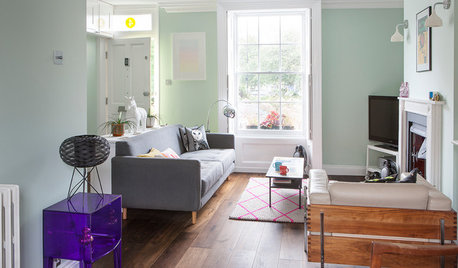
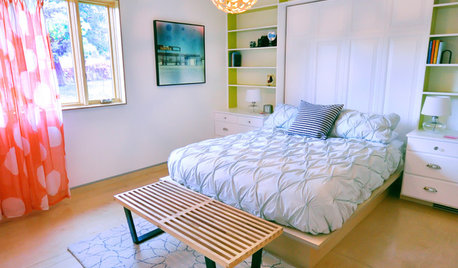
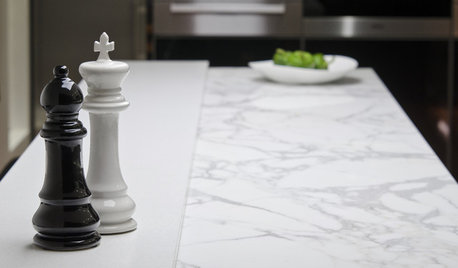
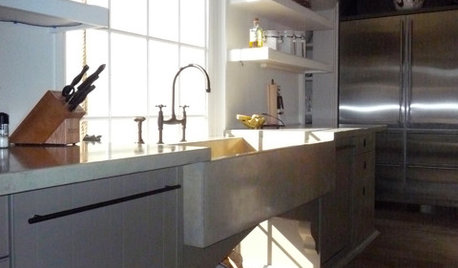

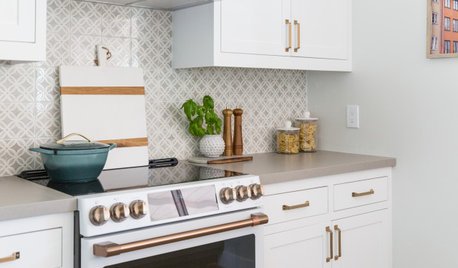
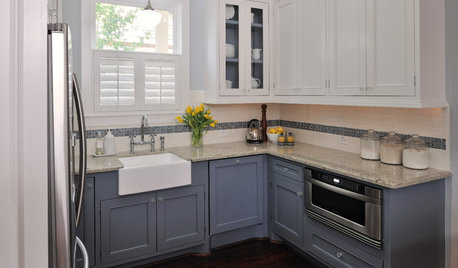
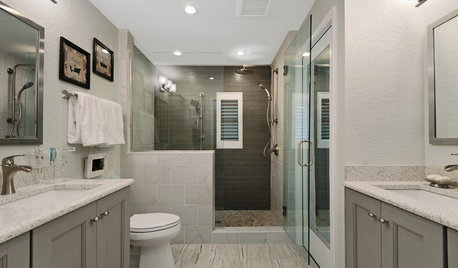

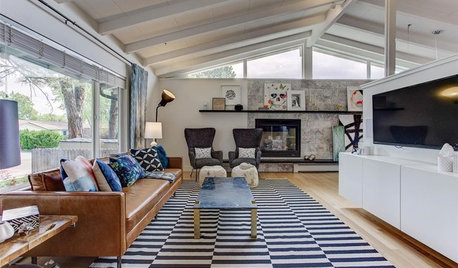







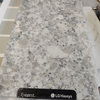
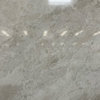
sixkeys
patty_cakes
Holly- Kay
ontariomom
chesters_house_gw
akshars_mom
deedles
berryjam
jakuvallOriginal Author
ardcp
jakuvallOriginal Author
mdln
patty_cakes
allpurpid
gardener123
User
jjpm